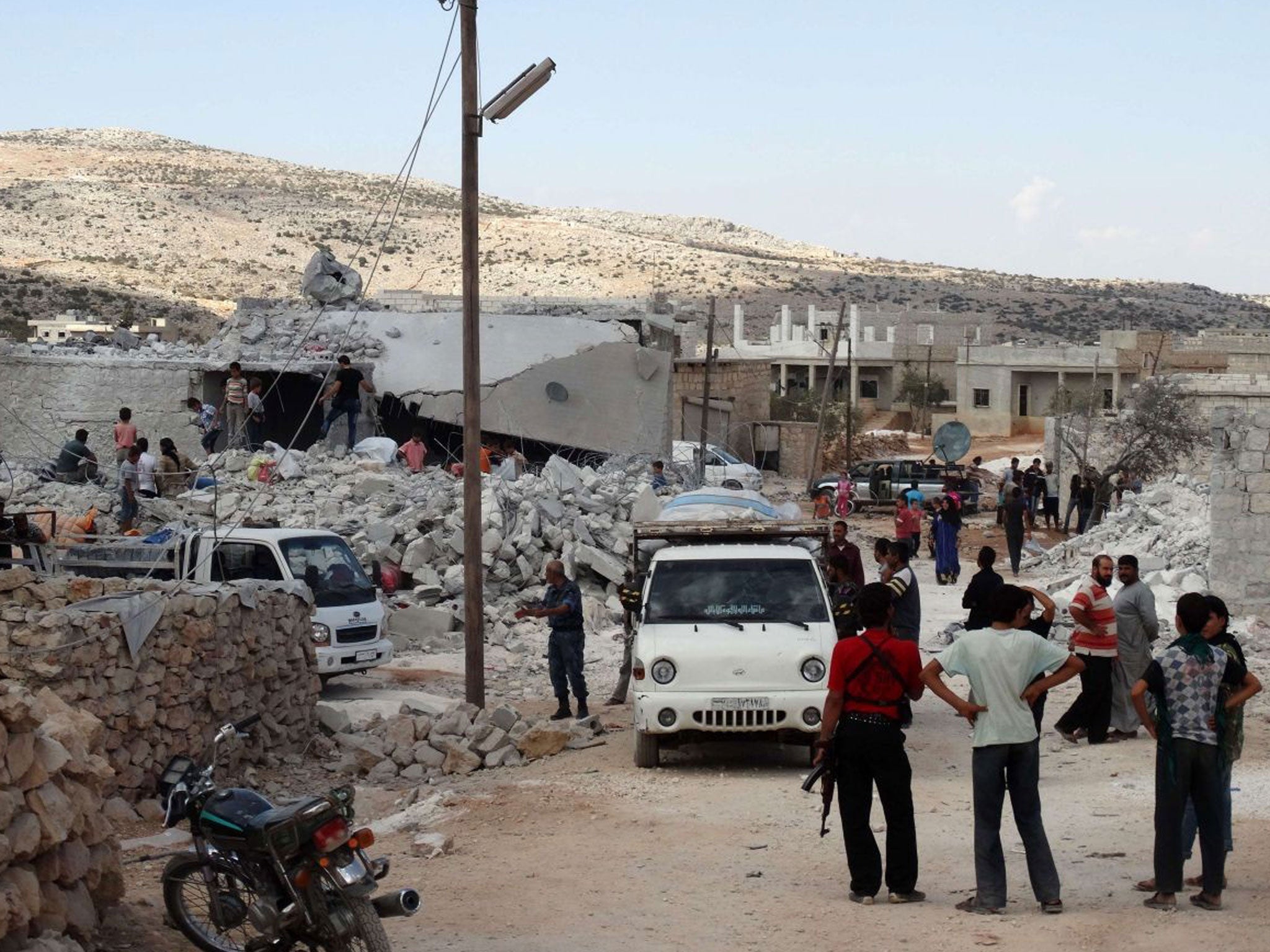Syria air strikes: The attacks are a severe blow to Isis – but boots on the ground may still be needed
A rising lethal toll from further raids risks support rising for the Islamists

In September last year I watched Isis and Jabhat al-Nusra move their fighters, weapons and prisoners from their bases in Syria in anticipation of impending attacks. With its chemical attack on al-Ghouta, the Syrian regime had crossed the red line decreed by Barack Obama and the Islamists were convinced they, too, would be targeted in the coming US air strikes.
Those strikes did not, of course, take place in the end. But what was clear was that both groups had plans in place for such an emergency. Three towns they dominated in northern Syria – Raqqa, Tal Rifaat and Manbij – were thinned out, with buildings vacated. Assurance was sought from other rebel groups that they would not take advantage of the situation to move forward and take territory.
Iyad al-Abdi, an activist who at the time had the trust of Isis, told me in Aleppo how guards were still outside to make some places “look important”, but the important people inside had gone. “They placed old trucks in the car parks to pretend the places were busy; they even kept the lights on in the evening in empty rooms.”
It was suspicion about Americans that made the Islamists take such precautions on that occasion. This time Isis knew it was directly in the firing line and al-Nusra could have deduced that it too would be on the receiving end after a sudden spate of media reports about how an offshoot, the Khorasan group, was about to launch an operation to bring down American and other Western airliners.
The 22 targets hit on Monday night were command-and-control centres, training facilities, a financial office, transport and supply depots in Raqqa, Dayr az Zawr, Al-Hasakah and Abu Kamal. Pentagon spokesman, Rear Admiral John Kirby, refused to say whether the strike on Khorasan, west of Aleppo, had ended the supposed imminent threat posed. But General Martin Dempsey, chairman of the Joint Chiefs of Staff, insisted that the strikes had been a success: “We wanted to make sure that Isil [Isis] knew they have no safe haven and we certainly achieved that.”
Unlike the strikes in Iraq, the US used its latest and most advanced weaponry in this operation. The F-22 Raptor stealth fighter jet flew in its first combat mission and the other aircraft included F-15E, F-16 and F-22 fighter-bombers, Navy F/A-18 fighters and armed Predator drones. Two warships, the USS Arleigh Burke and USS Philippine Sea, launched 47 Tomahawk cruise missiles.
US aircraft had been carrying out surveillance over Syria for more than a month in preparation. But unlike Iraq, where they control the airspace, the Americans had to jam the Assad regime’s air defence system each time they were overhead, a procedure which had to be handled with care with a mistake resulting in missiles possibly being launched and bringing down a drone – another complication in a complex scenario.
Isis has a range of surface-to-air systems. The defences of the aircraft used by the US and its allies would be able to cope with the vast majority of the missiles, but recently, after the capture of a regime airbase, the Islamists have acquired SA-24 Grinch missiles which can make some of the warplanes vulnerable. It remains to be seen whether they are capable of using them effectively.
It will also take a while to ascertain the extent of the damage inflicted on the Islamists. Reports from inside Syria stated that most of the targeted buildings had been evacuated beforehand. But, according to the UK-based Syrian Observatory for Human Rights, 70 Isis fighters and 50 from al-Nusra and Khorasan were killed and another 100, many critically injured, were taken to Iraq for treatment.
Admiral Kirby insisted that there were no American boots on the ground for the mission. Eight civilians are also reported to have died in the strikes. A rising lethal toll from further raids risks support rising for the Islamists and the danger of such “collateral damage” increases when there is a paucity of human intelligence from the scene.
This is just one of a number of arguments for deploying special forces. Another is the need to assist the more moderate opposition forces to claim the ground Isis and al-Nusra will vacate, rather than let the regime’s army reap the reward.
So far the Obama administration is adamant that will not happen. But conflicts such as the one in Syria have shown a tendency to project a momentum of their own.
Subscribe to Independent Premium to bookmark this article
Want to bookmark your favourite articles and stories to read or reference later? Start your Independent Premium subscription today.

Join our commenting forum
Join thought-provoking conversations, follow other Independent readers and see their replies